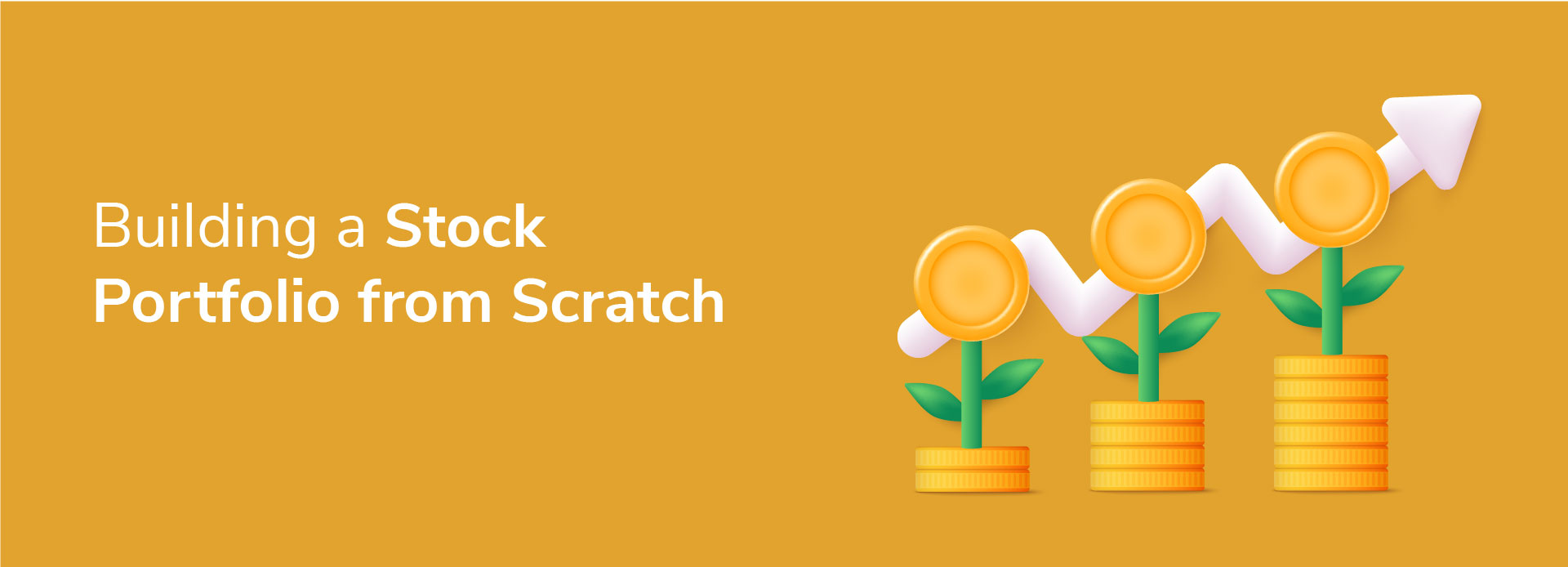
How to Build a Stock Portfolio From Scratch: A Step-By-Step Guide
09 April 2024 | By INDIE
Building a stock portfolio from scratch can be a rewarding but challenging endeavor for investors looking to grow their wealth over time. A well-constructed portfolio is a key component of a successful investment strategy, providing diversification and potential for long-term gains. In this step-by-step guide, we will navigate through the process of building a stock portfolio, helping both novice and experienced investors make informed decisions.
What Is an Investment Portfolio?
An investment portfolio is a collection of financial assets owned by an individual, institution, or entity. These assets are assembled with the goal of achieving specific financial objectives, such as capital appreciation, income generation, or a balance between the two. Investment portfolios typically include a diverse range of assets, such as stocks, bonds, mutual funds, real estate, cash equivalents, and other securities.
Types of Investments
Portfolios can include various types of investments, such as:
Equities (Stocks): Representing ownership in a company.
Bonds: Debt securities that pay periodic interest.
Mutual Funds and Exchange-Traded Funds (ETFs): Pooled investment funds.
Real Estate: Physical property or real estate investment trusts (REITs).
Cash and Cash Equivalents: Short-term, highly liquid investments.
How to Create an Investment Portfolio?
Let us now look at how to build a portfolio. The steps to build an investment portfolio are:
Define Your Financial Goals:
Before diving into the stock market, clarify your financial objectives. Whether it's saving for retirement, buying a house, or funding your child's education, understanding your goals will shape your investment strategy.
Assess Your Risk Tolerance:
Determine your risk tolerance level. Are you comfortable with the volatility of high-growth stocks, or do you prefer the stability of established companies? Assessing your risk tolerance helps in selecting the right mix of stocks for your portfolio.
Research and Educate Yourself:
Conduct thorough research on the stock market, individual companies, and different sectors. Stay informed about market trends, economic indicators, and company financials. Utilise reputable financial news sources and educational materials to enhance your knowledge.
Diversify Your Portfolio:
Spread your investments across different sectors and industries to reduce risk. Diversification helps mitigate the impact of poor-performing stocks on your overall portfolio. Aim for a mix of growth stocks, value stocks, and income-generating assets.
Start with Blue-Chip Stocks:
Consider including well-established, financially stable companies, often referred to as blue-chip stocks, in your portfolio. These companies typically have a history of consistent performance and can provide a solid foundation for your investments.
Allocate Assets Strategically:
Determine the percentage of your portfolio allocated to different asset classes, such as stocks, bonds, and potentially other investment vehicles. Asset allocation is a critical aspect of risk management and can be adjusted based on your investment goals and risk tolerance.
Regularly Monitor and Rebalance:
Stay actively involved in your portfolio by regularly monitoring your investments. Periodically rebalance your portfolio to ensure it aligns with your financial goals and risk tolerance. Adjust your holdings based on market conditions and changes in your investment objectives.
Consider Dividend Stocks:
Incorporate dividend-paying stocks to add a steady income stream to your portfolio. Dividends can provide a cushion during market downturns and contribute to the overall return on your investment.
Stay Disciplined and Patient:
Investing is a long-term game. Resist the urge to make impulsive decisions based on short-term market fluctuations. Stay disciplined, adhere to your investment strategy, and be patient as your portfolio grows over time.
Seek Professional Advice if Needed:
If you're unsure about making investment decisions, consider seeking advice from a financial advisor. They can provide personalized guidance based on your financial situation, goals, and risk tolerance.
Recommended Read: Navigating the Stock Market : 5 Crucial Tips to Successful Investing
INDIE Offering
You can find a diverse range of investment options on INDIE by IndusInd Bank. Based on your financial goals and requirements, you can choose the option that suits you best. From fixed deposits, to stocks and more, the choices are many. INDIE fixed deposits are designed to cater to the diverse needs of investors.
These deposit products provide a secure avenue for saving and investing money while earning a reasonable return. It's crucial for potential investors to carefully review the terms, interest rates, and any additional features offered by the bank before making investment decisions. Additionally, consulting with the bank or a financial advisor can help in choosing the most suitable deposit product based on individual financial objectives and risk tolerance.
Furthermore, INDIE offers hassle-free and instant processes to avail of banking services, making it a go-to choice for customers.
Conclusion
Building a stock portfolio from scratch requires careful planning, research, and a disciplined approach. By defining your goals, assessing risk tolerance, diversifying your investments, and staying informed, you can construct a portfolio that aligns with your financial objectives. Regular monitoring, adjustments, and a long-term perspective are key to a successful investment journey. Remember, building a portfolio is an ongoing process that evolves with your financial goals and market conditions.





